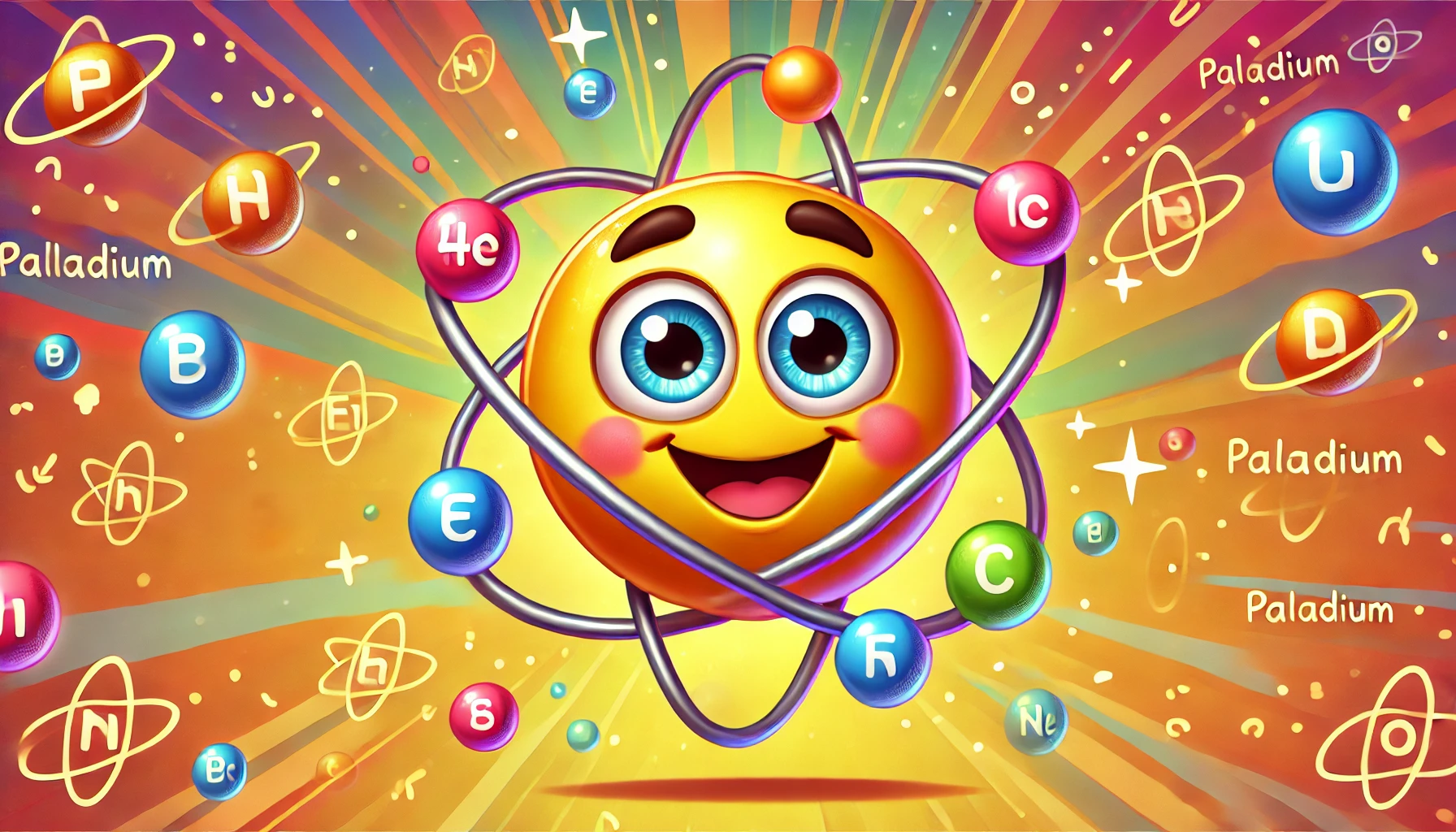Understanding Palladium: Properties, Uses, Health Risks, and Fascinating Facts
Understanding Palladium: Properties, Uses, Health Risks, and Fascinating Facts
Table of Contents
- Introduction to Palladium
- Properties of Palladium
- Uses of Palladium
- Health Risks of Palladium Exposure
- Interesting Facts about Palladium
- Environmental Impact of Palladium
- Conclusion
- References
Understanding Palladium: Properties, Uses, Health Risks, and Fascinating Facts
Introduction to Palladium Palladium is a chemical element with the symbol Pd and atomic number 46. It is a rare, silver-white metal that belongs to the platinum group of elements. Known for its exceptional catalytic properties and resistance to corrosion, palladium is widely used in various industrial applications. This article explores the properties, uses, health risks, and interesting facts associated with palladium, providing a comprehensive understanding of this valuable metal.
Properties of Palladium Palladium is characterized by several distinct physical and chemical properties.
Physical Properties
- Appearance: Palladium is a lustrous, silver-white metal.
- Density: The density of palladium is 12.02 g/cm³.
- Melting Point: Palladium has a melting point of 1,555°C (2,831°F).
- Boiling Point: The boiling point of palladium is 2,963°C (5,365°F).
Chemical Properties
- Reactivity: Palladium is highly resistant to corrosion and oxidation. It does not tarnish in air and is inert to most chemicals, except for sulfur and halogens.
- Compounds: Palladium forms various compounds, such as palladium chloride (PdCl₂), palladium nitrate (Pd(NO₃)₂), and palladium acetate (Pd(O₂CCH₃)₂).
Uses of Palladium Palladium has numerous applications across different industries due to its unique properties.
Automotive Industry
- Catalytic Converters: Palladium is widely used in catalytic converters in automobiles to reduce harmful emissions by converting carbon monoxide, hydrocarbons, and nitrogen oxides into less harmful substances. It is highly effective in controlling emissions, making it essential for meeting environmental regulations.
Electronics
- Electrical Contacts and Connectors: Palladium is used in electrical contacts and connectors due to its excellent conductivity, durability, and resistance to corrosion. It is often used in high-precision applications, such as in computer chips and connectors.
Jewelry
- Palladium Jewelry: Palladium is used in jewelry making, often alloyed with gold to create white gold. Its hypoallergenic properties and bright, white finish make it a popular choice for fine jewelry.
Chemical Industry
- Catalysts: Palladium is used as a catalyst in various chemical reactions, including hydrogenation, dehydrogenation, and carbon-carbon coupling reactions, such as the Heck and Suzuki reactions, which are essential in organic synthesis.
Dental and Medical Applications
- Dental Alloys: Palladium is used in dental alloys for crowns and bridges due to its biocompatibility, strength, and resistance to corrosion.
- Medical Devices: Palladium is used in certain medical devices and implants for its non-reactivity and durability.
Health Risks of Palladium Exposure Palladium is generally considered to have low toxicity, but there are some health risks associated with exposure to palladium compounds and dust.
Inhalation and Ingestion
- Respiratory Irritation: Inhalation of palladium dust or fumes can cause respiratory irritation, coughing, and shortness of breath.
- Gastrointestinal Issues: Ingestion of palladium compounds can cause gastrointestinal irritation, including nausea and vomiting.
Skin and Eye Contact
- Skin Irritation: Direct contact with palladium compounds can cause skin irritation and dermatitis.
- Eye Irritation: Exposure to palladium dust or solutions can cause eye irritation and potential damage.
Allergic Reactions
- Sensitization: Some individuals may develop allergic reactions to palladium, resulting in skin rashes, itching, and inflammation.
Chronic Exposure
- Organ Effects: Prolonged exposure to high levels of palladium compounds may affect the kidneys, liver, and other organs.
Interesting Facts about Palladium Palladium has several intriguing aspects that make it an interesting element.
Discovery
- Discovered in 1803: Palladium was discovered by English chemist William Hyde Wollaston in 1803. He named it after the asteroid Pallas, which had been discovered two years earlier.
Unique Properties
- Catalytic Properties: Palladium is known for its exceptional catalytic properties, making it valuable in various chemical reactions and industrial processes.
- Hydrogen Absorption: Palladium can absorb up to 900 times its own volume of hydrogen at room temperature, forming palladium hydride. This property is utilized in hydrogen storage and purification technologies.
Isotopes
- Stable Isotopes: Palladium has six naturally occurring stable isotopes, with palladium-106 being the most abundant.
- Radioactive Isotopes: Several radioactive isotopes of palladium are known, including palladium-103, which is used in brachytherapy for the treatment of prostate cancer.
Environmental Impact of Palladium Palladium is not known to have significant environmental impacts, but its extraction and use should still be managed responsibly.
Natural Occurrence
- Abundance: Palladium is relatively rare in the Earth’s crust and is typically found in ores containing other platinum group metals, such as pyroxenite and pentlandite.
- Mining: Extraction of palladium must be done carefully to avoid environmental damage and ensure sustainable practices.
Industrial Waste
- Waste Management: Proper disposal of palladium-containing industrial waste is crucial to prevent environmental contamination.
Conclusion Understanding palladium, its properties, uses, health risks, and interesting facts provides valuable insight into this precious metal. While palladium is generally safe with low toxicity, appropriate safety measures should be taken when handling palladium compounds and dust. Its applications in the automotive industry, electronics, jewelry, and chemical processes highlight its importance in modern technology and industry.

<ⓒ WizardMedics (wizardmedics.com)>






